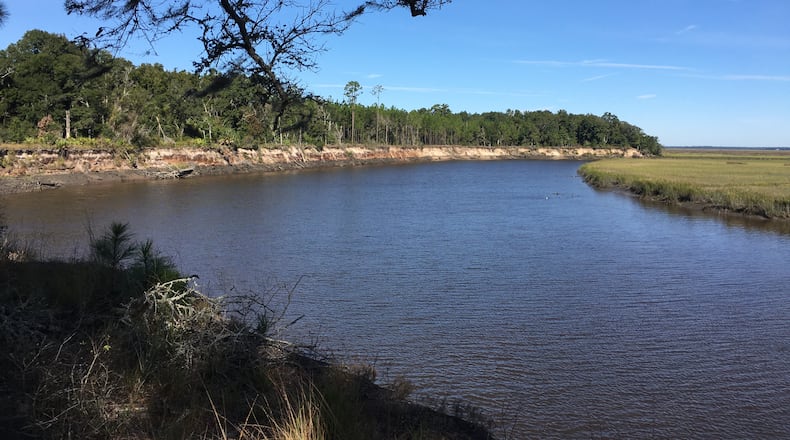A 16,000 acre stretch of undeveloped Georgia coastline will soon become a new wildlife management area. Purchased for an undisclosed amount by the Conservation Fund and Open Space Institute, the property sits along the Satilla River in Southeast Georgia near the city of Woodbine.
Both groups will work with the Georgia Department of Natural Resources to restore the animal and environmental habitats in an area that had been advertised as prime real estate for development.
“With the property’s proximity to Interstate 95 and the growing population centers along the Georgia and Florida coasts, it was highly threatened by resort, residential and commercial development,” said Andrew Schock, Georgia state director at The Conservation Fund in a statement. “Natural lands of this size are rare, and the ecological importance of this property has made it a top priority for conservation over the last decade.”
Known as the Ceylon property, the 16,083 acres of land is a mix of salt marsh and coastal forest. It is home to the once endangered longleaf pine as well as the gopher tortoise, the official state reptile. The conservation community in Georgia has worked for many years to acquire and manage enough populations of gopher tortoise so they won’t be listed as an endangered species, Schock said.
Credit: © Karine Aigner
Credit: © Karine Aigner
Several years ago, Georgia conservation partners launched an initiative to protect 65 viable gopher tortoise populations in the state, said Maria Whitehead, Senior Program manager for the Southeast at Open Space Institute. Acquisition of the Ceylon property will protect an estimated four of those populations bringing the total protected gopher tortoise populations to 90 percent of the goal, she said.
The area which boasts views of Jekyll and St. Simons islands was zoned as a planned development district which would have allowed for residential, commercial or industrial use, according to the property listing. But now it will remain pristine, Whitehead said. “There is an old cemetery, an artesian well and a few deer stands. It is incredibly unique to have that kind of acreage and no human infrastructure to speak of,” Whitehead said.
When the sale has closed, the Conservation Fund will own 8,555 acres while OSI will own 7,528 acres. Over the next few years, the organizations will work with the state Department of Natural Resources and other federal agencies to permanently protect the area under conservation easements and transfer ownership to the Department for a new wildlife management area.
Protecting more than 350 species that inhabit the area and specifically, keeping the gopher tortoise from being designated as an endangered species means the state would not be subjected to certain federal regulations that could impact the forestry and agricultural industries, Shock said.
It also provides some insurance against sea level rise caused by climate change, said Whitehead. With no development to interfere, as sea levels rise, the marsh will be able to move upslope and persist, she said.
But placing the land under permanent protection will depend on funding and support from federal, state and private sources. Over the next two years, the state plan to apply for awards and grants to acquire the property and permanently protect it.
For now, the Conservation Fund and Open Spaces Institute will work with the Department of Natural Resources on restoring the longleaf pine and Gopher Tortoise habitats on the property. By next spring, the land is expected to be open for public use including birding, hiking, fishing and hunting.
About the Author
Keep Reading
The Latest
Featured






